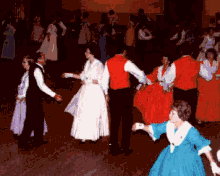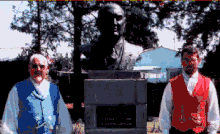


Volkspele is a South African folk dance tradition.
Directly translated, Volkspele means "folk-games" and can be translated to folk-dance. Folk-dance was the brain-child of South African Dr. SH Pellisier, who was visiting Sweden in 1915 with a friend to become more proficient in carpentry. After finishing their day's work they met with other young people in their respective countries' national dress to practise their folk-singing and -dancing. The South Africans were the only ones left out as they did not have any traditional dances.
Back in South Africa, Pellisier translated four Swedish dances and taught them to pupils at the Afrikaans High School in Boshof where he was Deputy Headmaster. During a Sunday School picnic on the farm Vuisfontein near Boshof on 22 February 1914 they performed the dances for the first time. The picnic games became known as volkspele.
With the help of the Reddingsdaadbond, an organisation which was established to assist poor Afrikaners after the Anglo Boer War, groups of dancers called laers were established throughout the country.
Get-togethers called saamtrekke are usually organised where all the laers get together to sing and do folk-dancing. The folk-dancers also present displays and have courses on different levels, seniors: people out of school, and juniors: learners in school, for either a weekend or longer. During the June school holidays there are also courses for grade 5-7 pupils (known as the Judith Pellissierweek - named after the wife of Dr Pellissier), grade 8-9 pupils (known as the Vormingsweek - Formative) and for grade 10-12 pupils (known as the Pellisierweek). From time to time there are overseas tours; or a folk-dance group or two will tour with South African folk-dancers in South Africa, giving displays at various towns. At these saamtrekke, displays, tours and courses the dress (volkspeledrag) is as the photos below show.
Tours have been conducted to Europe, Namibia, The United States and Turkey, with groups from Italy, Germany, Belgium and others touring South Africa.
The origin of the dress can be traced back to the formal attire worn by the pioneers or Voortrekkers. It is commonly referred to as the national dress, similar to those in European countries. In South Africa, all folk dancers adhere to a standardized style, with variations only in the choice of colors. Different regions or laers have distinct colors for both women's dresses and men's waistcoats, which are adorned with embroidered designs inspired by indigenous flowers.
External links
![]() Media related to Volkspele at Wikimedia Commons
Media related to Volkspele at Wikimedia Commons
| External videos | |
|---|---|